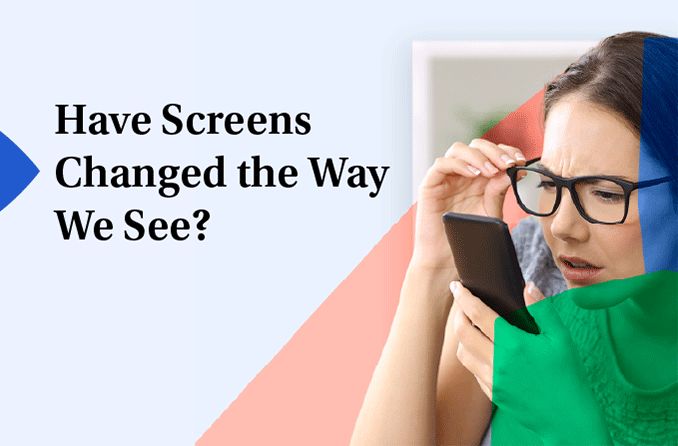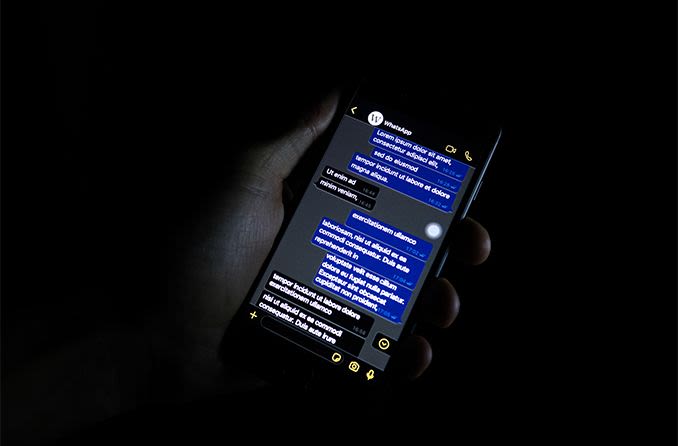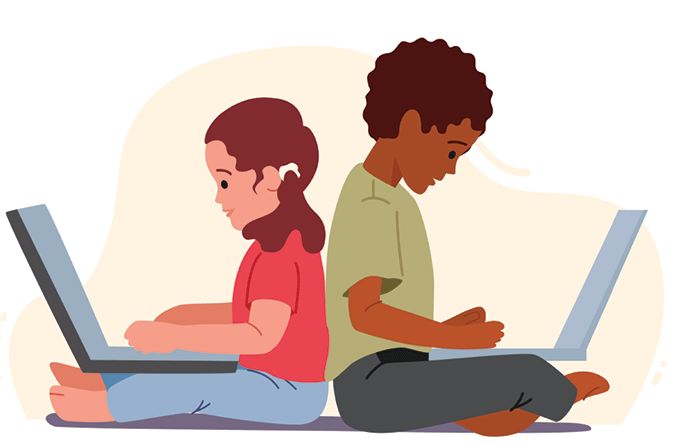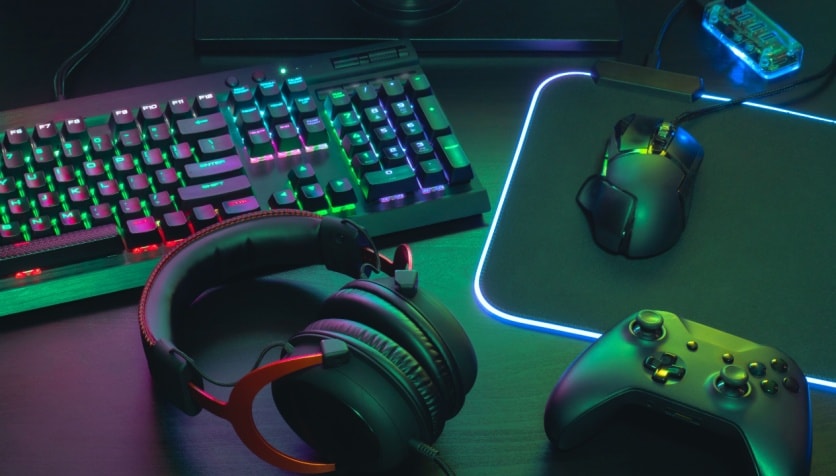How are screens impacting our vision?
Working from home has its benefits, like eliminating the need for a commute and allowing for more freedom and downtime. However, studies have shown going remote has also increased total numbers of hours worked.
In addition to more adults working from home, many children have transitioned to an online school model following the pandemic. These life changes have led many people to wonder about the effects of prolonged screen time, as well as higher levels of screen time, especially how it may impact young Americans who’ve been exposed to screens much earlier than older generations.
To better outline the effects of increased screen time on the body, we surveyed 1,000 full-time employees, of which over 70% were parents. Read on to learn more about the relationship between screen time and health among American workers today.
Key takeaways
Remote employees spend nearly 13 hours per day, on average, staring at screens.
43% of remote workers have left work early due to vision problems.
Is working from home bad for us?
Many more employers are allowing people to work from home as they’ve found it’s a viable alternative to working in the office. Studies have shown productivity increases when employees are allowed to work from their preferred home space.
With improved technology and support for work from home initiatives on the rise, workers should consider how these changes affect the amount of time they spend staring at screens.
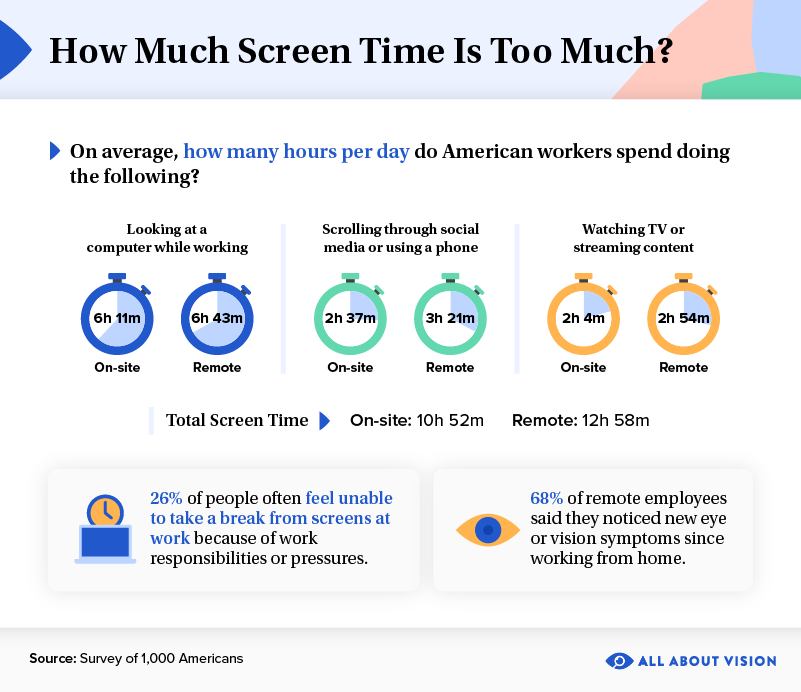
When compared to on-site workers, those working from home reported spending more time overall looking at screens, scrolling handheld devices and watching TV. We observed remote workers spent over two hours more on screens each day than on-site workers.
Trends also suggest remote workers take more time off or leave work earlier due to eye strain or headaches. Because of increased productivity, 68% of remote workers said they noticed new eye or vision symptoms since working from home, and 26% of all employees felt unable to take breaks due to work responsibilities or pressures.
Eighty-eight percent of survey participants reported visiting the eye doctor in the past 2 years, and 45% of these workers said their eyesight had worsened to the point they needed a new eyeglass prescription. While it might just be a coincidence, working from home and spending more time in front of screens may have contributed to poorer eye health.
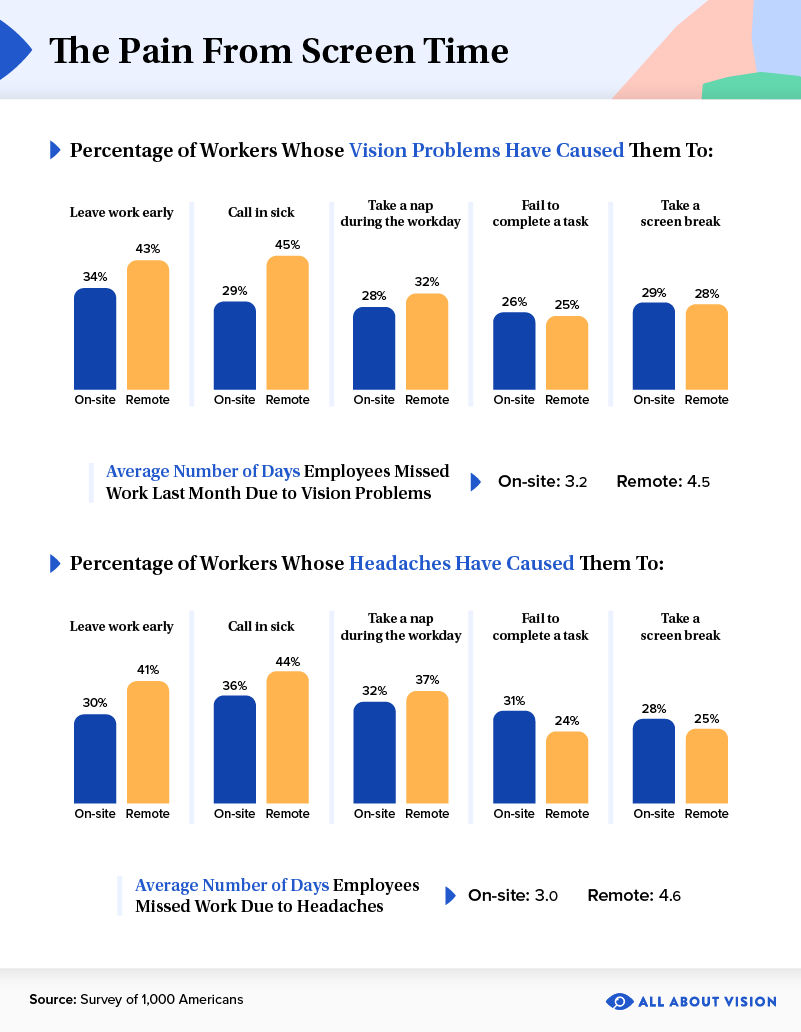
According to our survey results, working from home sometimes appears to be worse for workers’ health than working in an office. But remote work doesn’t have to negatively affect your life if it’s the better option for you and your family. A few simple changes to how you work at home can lead to great benefits. Consider these tips:
Take frequent breaks when spending long hours working at a computer or looking at screens. It may seem counterproductive, but when you’re looking at a screen 24 inches away or closer for long periods, screen breaks are necessary and may help reduce eye fatigue.
Practice the 20-20-20 rule, in which 20-second breaks are taken to observe an object at least 20 feet away for every 20 minutes of staring at a screen. It helps ease eye strain and can also be an exercise in mindfulness to remain involved with your work.
Limit screen time by performing tasks that don’t involve screens.
Use blue-light filtering glasses.
Turn on night mode/ dark mode on your devices. Don’t use the devices immediately before bed.
Do computer glasses make a difference?
There are many variables involved when analyzing the effects of computer glasses, but, they may improve your visual comfort when working from home. When our faces are almost constantly lit by device screens, the glare and effort to focus at near can put a lot of stress on our eyes. Wearing computer glasses with an intermediate prescription can help you more easily focus on your screen and blue-light filtering lenses can help decrease the glare.

Depending on the lenses, blue-light glasses can filter anywhere from 10% to nearly 100% of blue-violet light. Using blue-light filtering features on smart devices can also help to filter blue light. More than 6 in 10 survey respondents reported using night mode/dark mode on their phones in addition to or in place of blue-light filtering glasses.
A majority of remote workers (73%) used some form of blue-light filtering glasses/lenses, and of this group, 67% reported increased comfort. Additionally, 85% of wearers said blue-light glasses are a must for anyone who works from home, and 92% had recommended these glasses to someone they know.
Keep in mind that computer screens are a very small source of blue light. The majority of blue light exposure is from sunlight, even inside our homes and offices. Also, some blue light exposure can be good for you. Blue-turquoise light contributes to the maintenance of our sleep-wake cycle. Glasses must have a reddish, brownish or amber tint to filter blue-turquoise light; most clear-looking blue light glasses do not filter it.
The eyesight of future generations
Because of the prevalence of technology in the modern household, kids have more access to screens than their parents’ generations. Being aware of this fact means parents should consider how screens affect kids’ eyes and develop healthy eye habits with them.
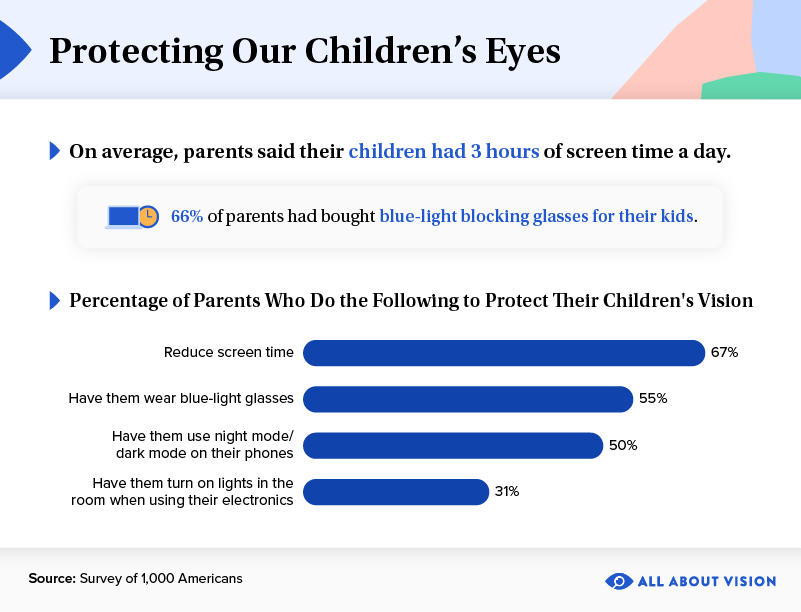
It’s worth considering computer glasses or blue light glasses for kids. Among those surveyed, 71% were parents, and they reported their children are usually on screens for an average of three hours per day. The number of hours kids spend on screens may actually be much higher than they estimated, with some teens spending up to 9 hours per day.
Many parents seem aware that too much screen time isn’t good for their kids, as more than 6 in 10 parents reduce screen time for their kids.
It’s possible for people of all ages to suffer from digital eye strain. An adult or child who has been overexposed to digital screens may have one or more of the following symptoms:
Vision changes
Dry eyes
Eye fatigue
Physical fatigue
Poor posture
Headaches
Even if a child doesn't have an eyeglass prescription, wearing a pair of computer glasses could be beneficial. Limiting screen time also helps to reduce digital eye strain and its negative effects. Keep in mind, common childhood vision problems may still be present regardless of preventative eye care routines, so talk to your child’s doctor if symptoms don’t improve with care or if you notice new symptoms.
Are you protecting your eyes?
If you’re anything like our survey participants, you’re probably considering buying computer glasses for yourself and your family if you haven’t already done so. Using these lenses could lead to a better quality of life, or they may not make a noticeable difference at all. It all depends on each person’s daily screen time exposure.
Prioritizing your vision and the eye health of your kids as soon as possible can mitigate worse symptoms in the future. Schedule frequent eye exams with an eye care professional to learn more about your unique eye needs.
Methodology
All About Vision surveyed 1,000 Americans about their screen time: 33.53% worked a hybrid schedule; 33.23% worked on-site, and 33.23% worked remotely. Of those we questioned, 71% were parents, while 29% were not. The margin of error was 3%, with a 95% confidence level. For short, open-ended questions, outliers were removed. Survey data has certain limitations related to self-reporting. These limitations include telescoping, exaggeration and selective memory.
Correlation, not causation
Headaches and vision problems at work may not be due to excessive screen time. The explanation could be excessive stress or using near vision too much, among other things.
Fair Use Statement
If you’re concerned about the effects of screen time after reading about our survey participants, please feel free to share this article with your colleagues. This article may be shared for noncommercial purposes only. Please be sure to link back to this page to credit our contributors.
